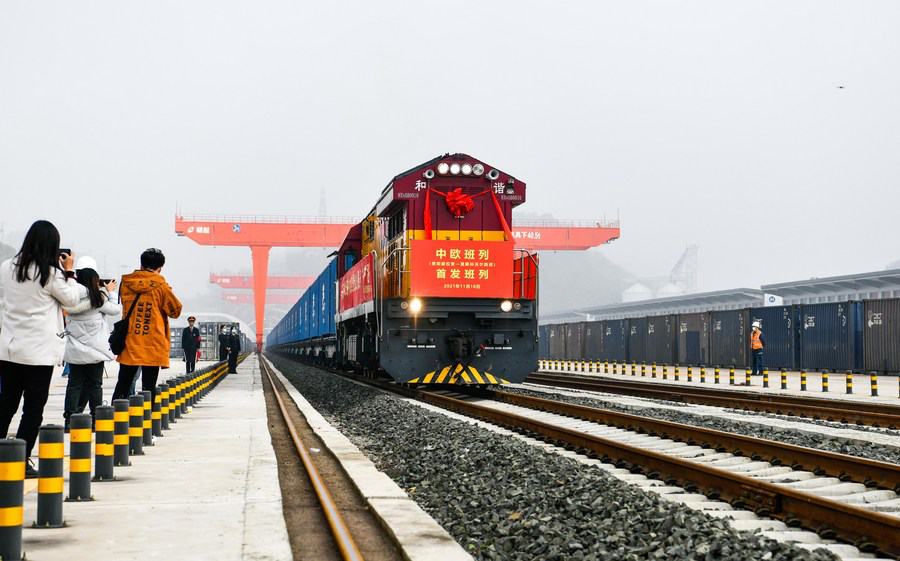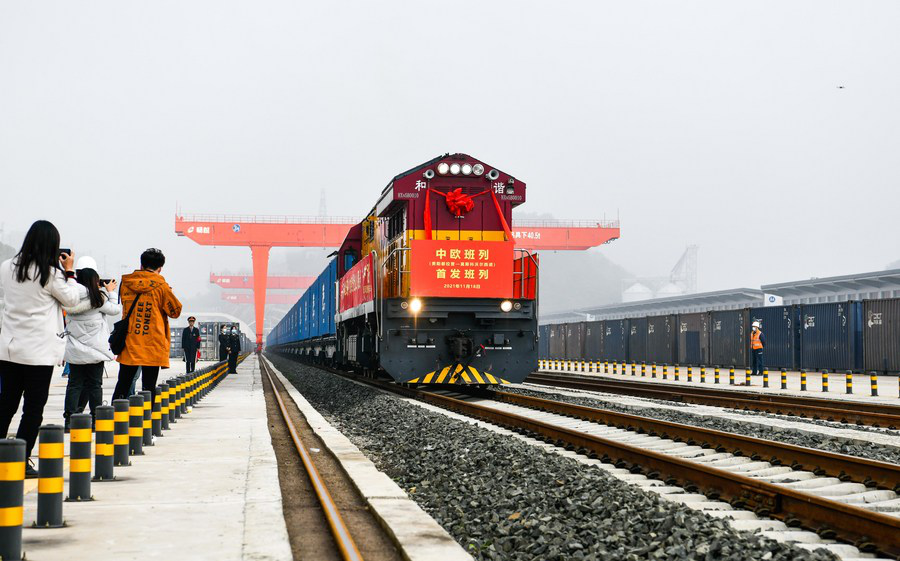
The first direct China-Europe freight train linking Guizhou Province and Russia's Moscow sets out from Guiyang, southwest China's Guizhou Province, Nov. 18, 2021. (Xinhua/Yang Wenbin)
BEIJING, Dec. 27 (Xinhua) -- China-Europe freight train services have reduced more greenhouse gas emissions than other modes of transportation, according to Alexei Grom, the chief executive officer of the United Transport and Logistics Company -- Eurasian Rail Alliance (UTLC ERA).
In the first ten months of this year, China-Europe freight trains passing through Russia, Belarus and Kazakhstan transported more than 573,188 TEUs of goods, resulting in 38,000 tonnes of direct carbon dioxide emissions. By contrast, under the same conditions, the direct carbon dioxide emissions produced by sea, road, and air transport modes amounted to about 183,000 tonnes, 3.405 million tonnes, and 20.2 million tonnes, respectively, much higher than the train transport, according to the Eurasian Railway Alliance Index, an index measuring the carbon emissions of trains.
UTLC ERA has developed the carbon dioxide emission counters tracking monthly amount of the carbon dioxide emissions. It will adopt unified electronic waybills in 2022 and gradually enter the data into the waybills for environment-friendly development, according to Alexei Grom in a recent interview with Xinhua.
The company will also make efforts to introduce innovative low-carbon railway logistics technology to further reduce carbon emissions.
Controlled by Russian Railways, Kazakhstan National Railways and Belarusian Railways, the UTLC ERA provides services for transportation on the route between China and Europe via the three countries. (Edited by Zhang Jian, Hu Pingchao with Xinhua Silk Road, hupingchao@xinhua.org)




 A single purchase
A single purchase









